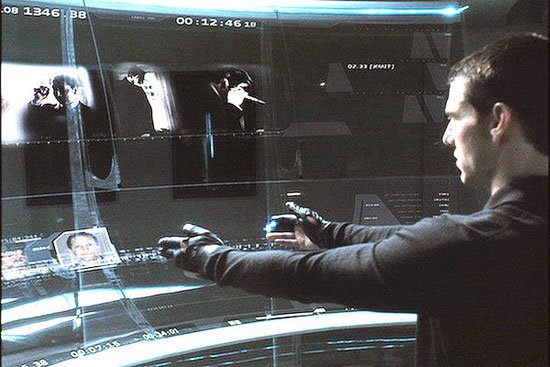Goodbye Com125!
Thursday, April 21, 2011
Sunday, April 17, 2011
Free topic!
As I was doing research for my previous entry about multimedia, I recalled visiting this website www.hotel626.com a few years ago. This interactive website is known as an advergame, which is basically an advertisement in the form of a game. Hotel626 invites visitors to participate in a game where players are trapped in a haunted hotel and have to complete tasks to get out of the hotel. To create a multi-sensory experience for its visitors, the game asks you to activate your webcam and to switch on your microphone; both devices will be made use of later in the game. Also, for a more realistic experience, players have to play the game in the dark as the website can only be accessed “after-hours” from 6pm to 6am.
The game consists of ten levels, each level will have a unique task or puzzle which you have to complete before moving on. Hotel626 uses audio to enhance the experience of being trapped in a haunted hotel. Whilst playing the game, you will be able to hear the sound of your footsteps, your breath as it quickens and your heartbeat as it races. At the last stage of the game, players in the United States are asked to enter their phone numbers so that they will be able to receive a phone call over their actual mobile phone from a ‘friend’ who will provide the player with directions to exit from the hotel.
I first played this game when I was 17, and it was only a year later when I interned for an advertising firm that I realized hotel626 is an advergame launched by Doritos to promote their 2 new flavours of chips. This shows that many companies utilize multimedia for marketing communication purposes and that this strategy is not limited only to companies that sell multimedia products.
As I was doing research for my previous entry about multimedia, I recalled visiting this website www.hotel626.com a few years ago. This interactive website is known as an advergame, which is basically an advertisement in the form of a game. Hotel626 invites visitors to participate in a game where players are trapped in a haunted hotel and have to complete tasks to get out of the hotel. To create a multi-sensory experience for its visitors, the game asks you to activate your webcam and to switch on your microphone; both devices will be made use of later in the game. Also, for a more realistic experience, players have to play the game in the dark as the website can only be accessed “after-hours” from 6pm to 6am.
The game consists of ten levels, each level will have a unique task or puzzle which you have to complete before moving on. Hotel626 uses audio to enhance the experience of being trapped in a haunted hotel. Whilst playing the game, you will be able to hear the sound of your footsteps, your breath as it quickens and your heartbeat as it races. At the last stage of the game, players in the United States are asked to enter their phone numbers so that they will be able to receive a phone call over their actual mobile phone from a ‘friend’ who will provide the player with directions to exit from the hotel.
I first played this game when I was 17, and it was only a year later when I interned for an advertising firm that I realized hotel626 is an advergame launched by Doritos to promote their 2 new flavours of chips. This shows that many companies utilize multimedia for marketing communication purposes and that this strategy is not limited only to companies that sell multimedia products.
Wednesday, April 13, 2011
The internet will be 42 years old in September!
The internet is a form of technology that has evolved the most in the shortest period of time. Since its introduction to the masses, it has seamlessly integrated itself into our lives. Without the internet, we will be sent back to the stone age of receiving information about events in the United States a month late, making ridiculously expensive phone calls to speak to our relatives overseas, using our mobile phones solely for text messaging and calls etcetera. How can we drive without checking traffic reports online? How can we do our homework without Google? How are we able to organize events with our friends without Facebook? Who are we going to tell what we ate for lunch without Twitter? Most people have started to live their lives guided by the internet; we are now so accustomed to using this technology that we find it hard to live without it.
As we have seen over the past decades, advancements in technology can do wonders and change our lives in many ways. There is no doubt that the internet will continue to grow, but it is difficult to predict how the internet will grow as it is impossible to concretely map the overall structure of the internet. These are some of my predictions of the future of the internet...
1) 3D Internet
The 3-Dimensional (3D) technology is being made available and affordable to the masses through movies and soon, televisions. It is only a matter of time before it becomes available to almost everyone connected to the internet.
The introduction of a 3D internet will display ultra-realistic representations of places and people. It will allow us to attend virtual meetings, concerts and even participate in virtual games.
2) Surf the web on any device
The integration of the internet into mobile devices has been met with tremendous success as half of all internet connections today come from mobile devices and the mobile web adoption and growth rates today are 8 times what wire line-based adaptation was 10 years ago. In a few years, I predict that the internet will be integrated into household appliances and other consumer devices. This trend of web-surfing internet appliances has already started as interactive coffee tables and cocktail tables have now been developed.
This video below shows Microsoft's vision of the future; it displays how the internet will be integrated further into out lives as it will be made accessible through almost any device.
3) Multi-touch computing
With touch screen technology becoming commonplace, the next phase would most likely be intuitive approaches to interfacing.
Clayton Miller shares his concept for multi-touch computing.
Apple’s Magic Mouse signals the beginning of multi-touch computing, although I feel that this technology will eventually evolve in such a way that our hand gestures and movements will act as a mouse.
By hacking his Xbox's Kinect, David Stolarsky managed to create the "SwimBrowser," a browser that requires the user to use hand motions similar to those you would use when swimming underwater. This allows us to have an idea of how we will be able to use the internet without a mouse in the future.
The internet is a form of technology that has evolved the most in the shortest period of time. Since its introduction to the masses, it has seamlessly integrated itself into our lives. Without the internet, we will be sent back to the stone age of receiving information about events in the United States a month late, making ridiculously expensive phone calls to speak to our relatives overseas, using our mobile phones solely for text messaging and calls etcetera. How can we drive without checking traffic reports online? How can we do our homework without Google? How are we able to organize events with our friends without Facebook? Who are we going to tell what we ate for lunch without Twitter? Most people have started to live their lives guided by the internet; we are now so accustomed to using this technology that we find it hard to live without it.
As we have seen over the past decades, advancements in technology can do wonders and change our lives in many ways. There is no doubt that the internet will continue to grow, but it is difficult to predict how the internet will grow as it is impossible to concretely map the overall structure of the internet. These are some of my predictions of the future of the internet...
1) 3D Internet
The 3-Dimensional (3D) technology is being made available and affordable to the masses through movies and soon, televisions. It is only a matter of time before it becomes available to almost everyone connected to the internet.
The introduction of a 3D internet will display ultra-realistic representations of places and people. It will allow us to attend virtual meetings, concerts and even participate in virtual games.
2) Surf the web on any device
The integration of the internet into mobile devices has been met with tremendous success as half of all internet connections today come from mobile devices and the mobile web adoption and growth rates today are 8 times what wire line-based adaptation was 10 years ago. In a few years, I predict that the internet will be integrated into household appliances and other consumer devices. This trend of web-surfing internet appliances has already started as interactive coffee tables and cocktail tables have now been developed.
This video below shows Microsoft's vision of the future; it displays how the internet will be integrated further into out lives as it will be made accessible through almost any device.
3) Multi-touch computing
With touch screen technology becoming commonplace, the next phase would most likely be intuitive approaches to interfacing.
Clayton Miller shares his concept for multi-touch computing.
Apple’s Magic Mouse signals the beginning of multi-touch computing, although I feel that this technology will eventually evolve in such a way that our hand gestures and movements will act as a mouse.
By hacking his Xbox's Kinect, David Stolarsky managed to create the "SwimBrowser," a browser that requires the user to use hand motions similar to those you would use when swimming underwater. This allows us to have an idea of how we will be able to use the internet without a mouse in the future.
Subscribe to:
Comments (Atom)








